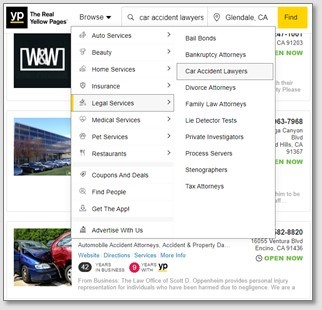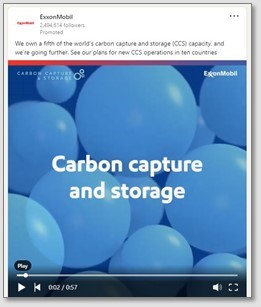Targeting Your Audience Using the Right Mix of Ad Platforms
 Digital advertising has reached new heights with targeting technologies. These technologies allow you, as marketers, to more precisely reach your ideal customers for more efficient spend of your marketing dollars. Many platforms are based on keyword search technologies that track those seeking particular products or services online; other platforms track sites visited by users so as to create digital profiles of their interests for display advertising; while others use technology to interject context-relevant, in-stream advertising to those who are talking to friends on social media; and others identify target customers based on their actual location and serve mobile ads (in real time) so as to capture their attention while nearby. The question is: Which platforms should you use for which results?
Digital advertising has reached new heights with targeting technologies. These technologies allow you, as marketers, to more precisely reach your ideal customers for more efficient spend of your marketing dollars. Many platforms are based on keyword search technologies that track those seeking particular products or services online; other platforms track sites visited by users so as to create digital profiles of their interests for display advertising; while others use technology to interject context-relevant, in-stream advertising to those who are talking to friends on social media; and others identify target customers based on their actual location and serve mobile ads (in real time) so as to capture their attention while nearby. The question is: Which platforms should you use for which results?
Keyword Search
Search platforms operate on the basis that the consumer knows what type of product or service he/she is looking for – but they need more information about the product, what companies offer it, and/or where to find it. To provide this information, search technology matches keywords on a Website in a second to those submitted by a user.
Search engines like Google and Bing are among the most widely-used search platforms. The good news is they are comprehensive, scouring the entire web for relevant information. The bad news is they are comprehensive, often returning thousands of results. The top engines, however, do a good job of presenting links to the most relevant websites on the first page of the results. And, given that Google is the most-used tool for finding information online, it is imperative that your marketing efforts put your business on all three sections of the first Google search results page: “paid placement” section at the top of the page; local business listings in the middle of the page; and organic (“nonpaid”) information below that.
 Other valuable search engines are more streamlined based on the needs of the user. For instance, business directory search engines such as YP.com, Superpages.com, and eLocal.com serve up information from their own curated database of consistent, reliable business information. This includes business name, location, contact information, products and services, and reviews and ratings. These sites are ideal when the user knows what product or service they are looking for and just need to find local businesses that provide it. What’s particularly useful with business directories is the ability to browse and drill down based on categories of interest. For example: Restaurants/Italian Restaurants, or Legal Services/Car Accident Attorneys.
Other valuable search engines are more streamlined based on the needs of the user. For instance, business directory search engines such as YP.com, Superpages.com, and eLocal.com serve up information from their own curated database of consistent, reliable business information. This includes business name, location, contact information, products and services, and reviews and ratings. These sites are ideal when the user knows what product or service they are looking for and just need to find local businesses that provide it. What’s particularly useful with business directories is the ability to browse and drill down based on categories of interest. For example: Restaurants/Italian Restaurants, or Legal Services/Car Accident Attorneys.
Display Advertising
Online display ad platforms such as Google Display Network, Apple Advertising, Yahoo! Network, and Facebook Audience Network are designed to push display ads to their vast partner network of websites and apps that consumers use daily. Display networks send relevant ads to specific audiences based on search terms, user demographics, and user behavior.
Retargeting is also a technology behind display advertising. It that sends “traveling” ads to users over time during the buying cycle based on their user profile which captures the websites the user visits and the content on the visited pages. As the user profile changes, the delivery of ad messages and frequency can change with it.
The benefits of retargeted display ads are that they are able to be delivered to individuals who have bought and those likely to buy, and they can increase brand awareness over time.
In-Stream Advertising
 An in-stream ad is a promotion created by a brand that runs before or in between content on a streaming social platform—such as YouTube, Facebook, and Twitter—where user posts continuously stream in.
An in-stream ad is a promotion created by a brand that runs before or in between content on a streaming social platform—such as YouTube, Facebook, and Twitter—where user posts continuously stream in.
A benefit to in-stream ads, such as video, is that they can be targeted to audiences similar to your brand audience using keywords you define. ExxonMobile, as an example, inserts this video ad (shown to the right) into streaming content on LinkedIn to educate audiences that have shown interest in eco-friendly solutions.
Since in-stream ads target audiences that have interests and buying behaviors similar to those of your customers, your video ads would likely yield higher engagement.
Mobile Location-Based Advertising
Location-based advertising integrates online and mobile devices with location-based services. The technology taps into user devices to pinpoint their location and provide location-relevant advertisements.
Some location-based platforms track a user’s location based on their IP address, which can often be misleading and inaccurate. The more common and more advanced platforms of today use mobile phone GPS technology to identify and track the locations of a user. As the user travels about, the tracking of the phone’s locations helps identify where the user lives, works, plays, and shops. These patterns are used to create a profile of the user’s interests. The platform can then send a brand’s advertisement to those users that match its desired audience, or it can use the phone’s real-time location to send an ad indicating that a business matching the user’s interests is nearby. This is an ideal platform for businesses with quick-buy consumers such as restaurants, quick oil change businesses, and entertainment venues.
Each of these technologies delivers different advantages based on your desired results and target audiences. It’s also a challenge to figure out which solutions are best for your organization. The best way to begin is to hire an in-house expert or engage a digital marketing agency. If you would like more information on how to get started or how to raise the bar on what you’re currently doing, call Berry Network at 1-800-366-1264.
